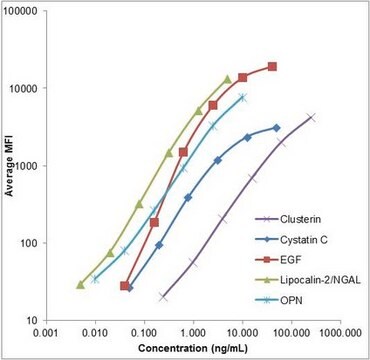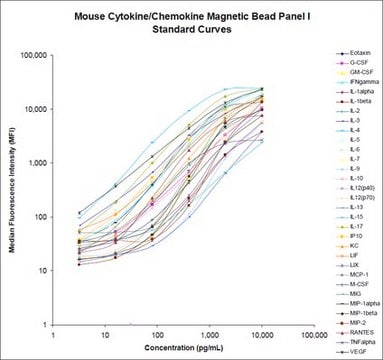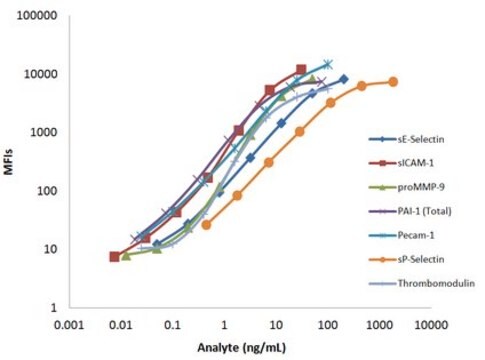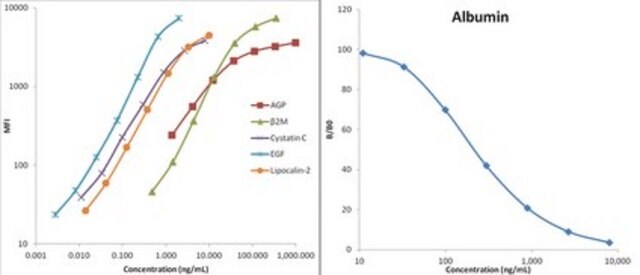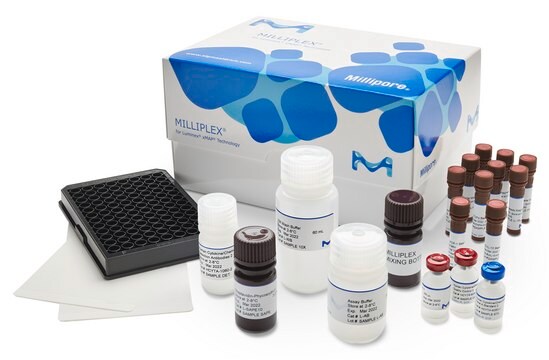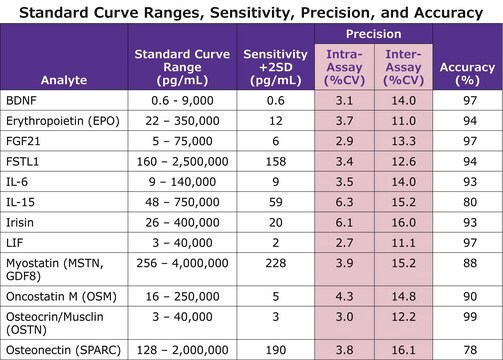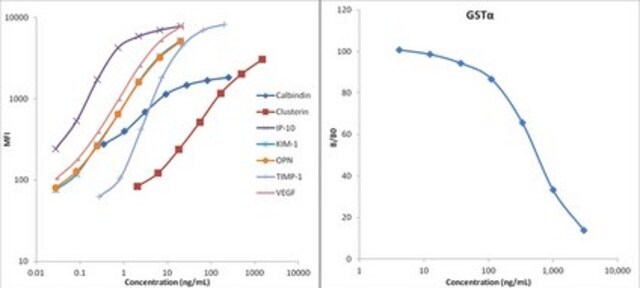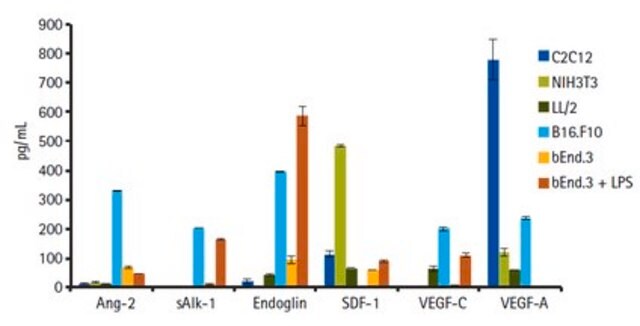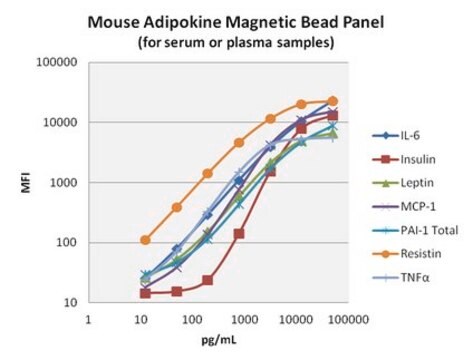MKI1MAG-94K
MILLIPLEX® Mouse Kidney Injury Magnetic Bead Panel 1 - Toxicity Multiplex Assay
The analytes available for this multiplex kit are: β-2-Microglobulin, IP-10, KIM-1, Renin, TIMP-1, VEGF (for urine samples) or IP-10, KIM-1, Renin, and TIMP-1 (for serum/plasma samples).
About This Item
Recommended Products
Quality Level
species reactivity
mouse
manufacturer/tradename
Milliplex®
assay range
accuracy: 73-98%
sensitivity: 0.001-0.041 ng/mL
(MinDC+2SD)
standard curve range: 0.001-1 ng/mL
(VEGF)
standard curve range: 0.005-5 ng/mL
(IP-10)
standard curve range: 0.01-15 ng/mL
(KIM-1)
standard curve range: 0.02-25 ng/mL
(TIMP-1)
standard curve range: 0.05-50 ng/mL
(β-2-Microglobulin)
standard curve range: 0.05-50 ng/mL
(Renin)
technique(s)
multiplexing: suitable
detection method
fluorometric (Luminex xMAP)
shipped in
wet ice
General description
Application
- Analytes: β-2-Microglobulin, IP-10, KIM-1, Renin TIMP-1, VEGF
- Recommended Sample type: urine
- Recommended Sample dilution: 1:25
- Assay Run Time: overnight
- Research Category: Toxicity
Features and Benefits
Other Notes
Legal Information
Signal Word
Danger
Hazard Statements
Precautionary Statements
Hazard Classifications
Acute Tox. 3 Dermal - Acute Tox. 4 Inhalation - Acute Tox. 4 Oral - Aquatic Chronic 2 - Eye Dam. 1 - Skin Sens. 1 - STOT RE 2
Target Organs
Respiratory Tract
Storage Class Code
6.1C - Combustible acute toxic Cat.3 / toxic compounds or compounds which causing chronic effects
Certificates of Analysis (COA)
Search for Certificates of Analysis (COA) by entering the products Lot/Batch Number. Lot and Batch Numbers can be found on a product’s label following the words ‘Lot’ or ‘Batch’.
Already Own This Product?
Find documentation for the products that you have recently purchased in the Document Library.
Related Content
Multiplex toxicity assays enable researchers to simultaneously measure multiple toxicity biomarkers of various organs to gain a better understanding of toxicity. Explore how MILLIPLEX® multiplex toxicity assays are advancing research on liver injury, kidney toxicity, genotoxicity, and more.
Our team of scientists has experience in all areas of research including Life Science, Material Science, Chemical Synthesis, Chromatography, Analytical and many others.
Contact Technical Service